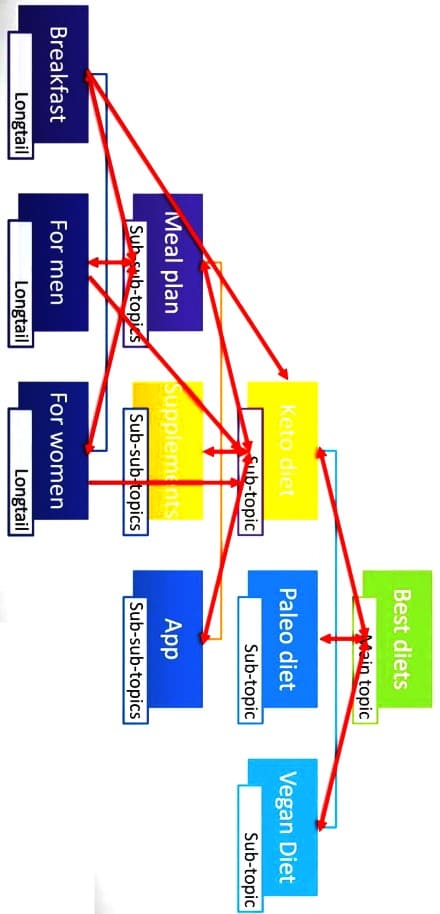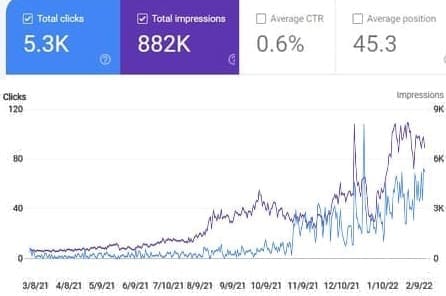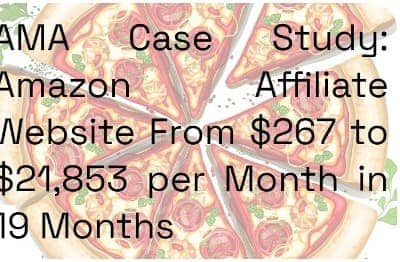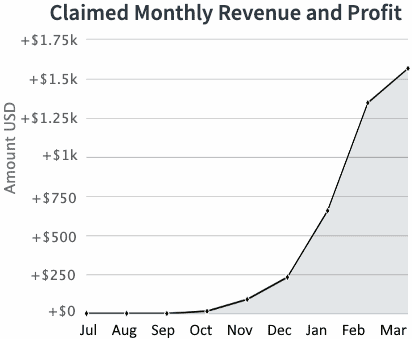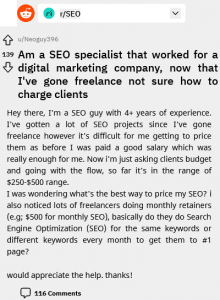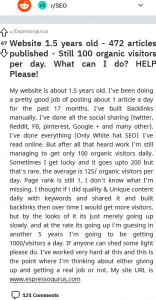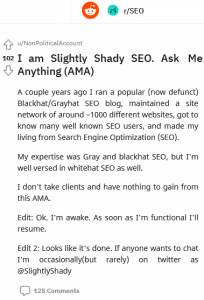Lessons from working on a new website and scaling it from 713 visitors/mo to 8321 visitors/mo in 2 months..
Context:
We picked up a client in the adult/adjacent niche in Australia in August and started working on the website.
The website had recently launched and they had a simple mandate: we want to ensure that most of our major keywords are on Page 1 by the end of December.
Usually, we don't pick up clients like that since they turn out to be a headache. We relayed it in the simplest possible manner to them, and they came back with a carte blanche regarding the website and we started the work with a simple analysis.
Solution:
The problem was to first understand the kind of competitors that we were ranking up against. The websites on top had tons of backlinks (most of them being spammy, but still, the lowest number was 117K). The User Experience (UX) wasn't great, and neither was the content quality. However, the sheer number of pages being published, combined with a good architecture was definitely helping out the sites. We then went ahead and divided the problem into the following key problem statements:
• What kind of architecture do we have in place \- How many pages are we planning to build in the upcoming 5 months, and is there a plan to create a structure around them. The answer was nearly 600, and the answer to the second question was "Huh?" We defined 19 total hubs across the cities, mapped them out between cities and categories, and then went ahead and started creating pages. So far, the number is 413.
• What is the internal linking strategy in place \- Many people often overlook this to their detriment, and that is the biggest issue across the board. We wanted to ensure that every hub is connected at least once to every other hub, every second page in each city/category is connected to each other (nearly 10 of them) and links back to the Home and its category page, and every tertiary page links back to the Home, Category, and at least 10 other tertiary pages.
• What kind of keyword capturing is being done and are we keeping a track of keyword cannibalization \- It is inevitable that your pages will start cannibalizing each other on Long-Tail Keywords, and sometimes even on the Primary and the Secondary keywords as well. At this point in time, export all the keywords that you are ranking on in Search Console on a page level, and keep a weekly track of how the positions fluctuate. If you don't know how to check for duplicates across pages, simply download all the keyword-level data from Search Console for all the pages you want to run an analysis on and add a single column that contains the Page URL in front of all the keywords on that page. Next, open up Excel, and keep on adding all the line-items from all the pages, which will contain 6 columns; Query, Clicks, Impressions, Click Through Rate (CTR), Rankings, and Page URL. Now, in excel, open up, Conditional Formatting, Highlight Cell Rules, and Duplicate Values. You will end up with keywords that appear on multiple pages that you can filter out and start tracking. At this point in time, after 3-4 weeks, you can start removing keywords that are rising on one page, and falling or are stable on the other(s).
• Next up came to the actual work on the pages. For content optimization, it was an extremely simple task: look at the keywords that they were missing compared to their competitors, and create content for them, and even the simplest of content would do, as long as the keyword coverage is there. Most importantly, the images HAD to be High-Res, and the website as fast as possible. Their web-dev was pretty competent so we didn't face any issues in this department, and we started rolling out the content from mid-August at a break-neck pace.
• Lastly, we came down to backlinks and citations. We ensure that the hub pages had at least 5 links each in Month 1, which became 8 each in Month 2, and 10 each in Month 3. The Home Page started with 15 links, to 25, to 40 links and continues to build. While, we had absolutely zero chance of catching up to the competitor link numbers, we were able to ensure that the links that we built were all text-based, contextual links, which ensured that the overall link profile went up. Lastly, we built up at least 50 citations on a monthly basis, to add up to the website.
Results so far:
• The overall traffic increased from 713 visitors/mo in July to 8321 visitors/mo in September, and so far in October, we have crossed, 10,914 visitors on the website
• The total number of keywords the website was ranking on, jumped from 302 to 1,167 during this period
• The total leads generated scaled from 31 in July to 352 in October so far
Happy to answer any questions about this case study, or else feel free to ask me anything regarding the recent Google updates from the last month (5 so far), or anything about backlinks.
48 💬🗨
📰👈
Sounds good, I love seeing content around processes on here, what is your link building process?
Thanks, man.
We follow a 4-step process for link building:
• We identify the pages that we want to build link to and polish them up/help the client in polishing it up. We don't want to ensure that we are helping the Google bots look up a page that doesn't qualify for higher rankings, and hence that is always the first step
• We then download a dump of all the keywords it ranks for, and identify the money-making and ranking potential for all these keywords and go with a 50:50 weightage for both the factors. It can change depending on the discussion with the client
• We then move forward and extract all the websites that are already ranking for those keywords from Ahrefs and SEMrush. With the help of Hunter.io, we have set up a sheet that allows us to extract the author's email from an article title, and we then run a quick analysis on the quality of each site based on certain metrics like Organic Traffic, Link/Root Domain Ratio, Existing Backlinks, Type of Content, Anchor Text ratio, and Domain Authority (DA)
• Once the analysis is done, we bifurcate the websites into 2 halves: ones that we send out a personalized link to, and the others that receive a generic email from us. For the personalized emails, the goal is to get free links based on the quality of the content, since we have already assessed that they have shared similar content previously. For the others, we are happy to pay an editorial fee to acquire the link
Thanks for sharing. How many percent would you say is the success rate of this method?
edit: Also follow up question, do you mean you contact the sites that are ranking on those keywords? or their backlinks
randomvar ✍️
For all of our personalized emails, the success rate varies between 7-19% depending on the quality of the content.
For non-personalized, it is anywhere between 1-5%.
And I meant all the websites that have previously created content for those keywords.
Bayfman
I'm considering changing the structure of my page.
For example, I have blogs on country guides. So my main categories are the countries. But currently I have around 40 pages in the 'Ecuador' catergory, and would like to add cities as the next category. For example home > Ecuador > Quito
But I'm scared that by changing the structure and moving pages into a new sub category will mess upmy ranking.
Is it worth taking the hit in the short term?
It may not affect your rankings if you set up your 301 properly and build up links to the new page to offset any loss of link juice.
However, if you have any plans of scaling this blog, you MUST consider investing in changing the structure now, rather than 1 year down the line when the traffic has grown even more.
FullSun
"We defined 19 total hubs across the cities, mapped them out between cities and categories, and then went ahead and started creating pages. So far, the number is 413."
could you please explain what do you mean by hubs and that process, much appreciated, always learning
If you have a health-related website, you define your hubs as exercising, gym, nutritional products, digital well-being, diet, yoga, and other categories. For gym, you can further break it down to which body part you are targeting and they become your sub-categories.
Essentially, you create silos where you target a main category as a hub, and related sub-topics as spokes/sub-categories/children of the said category.
📰👈
AMA Case Study: Amazon Affiliate Website From $267 to $21,853 per Month in 19 Months


